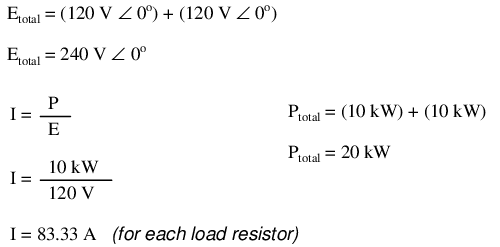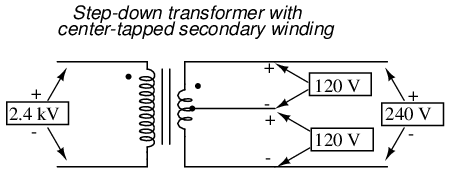@emergingsoul said:
Yes I know both new circuits or an alternating legs, and that could be a real weakness.
But if all the legs where I live are generally quiet then I don’t see the problem on this point.
Got Digital Front End Equipment? The hash it puts back out on the mains ain’t quiet.
Got any SMPS (Switched Mode Power Supply)s? The harmonics they put back out on the mains ain’t quiet.
Using a multiwire branch circuit will dump that crap on the doorstep of the power transformer’s primary winding of the analog equipment. You want noise, that’s a good way to introduce it into your analog equipment.
The other issue, there is a common neutral wire representing a return connection to the panel, but it’s not the incoming voltage wire.
It takes two to tangle.
It takes both lines to feed a 120V potential to a load for current to travel in the circuit. Current travels from the source through the load and returns to the source. The neutral conductor is a current carrying conductor. The same as a hot Line conductor is a current carrying conductor.
Are you saying noise could bleed back to the audio equipment from the neutral?
NO, I am not.
Here is the circuit using a multiwire branch circuit... I hope you can follow it. Draw a one line diagram on a piece piece of paper showing flow of the current through the series circuit.
At the panel you have a Hot L1 bus and a Hot L2 bus.
L1 breaker hot conductor to >>>
digital equipment power transformer primary winding, (OR, SMPS), out to >>>
neutral conductor to junction with shared branch circuit neutral conductor. Neutral conductor from shared neutral junction to >>>
amp primary winding through winding out to >>>
Hot L2 conductor back to the electrical panel breaker on L2.
See it ain’t neutral current carrying the "Noise" created by the digital equipment. It’s the L1 & L2 balanced load current that travels through the AC line side power supply of the digital equipment >>> through the line side power supply of the analog equipment out >>> on L2 back >>> to the electrical panel.
By design the multiwire branch circuit feeds the balanced load current that is fed from Hot L1 conductor >>> (digital equip) >>> in series with >>> (analog equip) >>> Hot L2 back to the electrical panel .
Keep in mind this is a 70 foot run for a romex wire.
Yeah, I got two 10/2 with grd Romex runs 70ft each. Installed them using best practices methods. One dedicated circuit is for digital equipment, the other for analog equipment.
No ground loop hum. No noise. System is dead quiet with ear against speaker grill.
Preamp and power amp are tubes. Dead quiet...
I’m trying to keep this conversation understandable because I think people get lost when it’s not dumbed down for non-engineering finance side people
Trust me I’ve tried my best to explain how a multiwire branch circuit works in layman terms. Did you watch the videos I supplied. Did you understand them?
.




